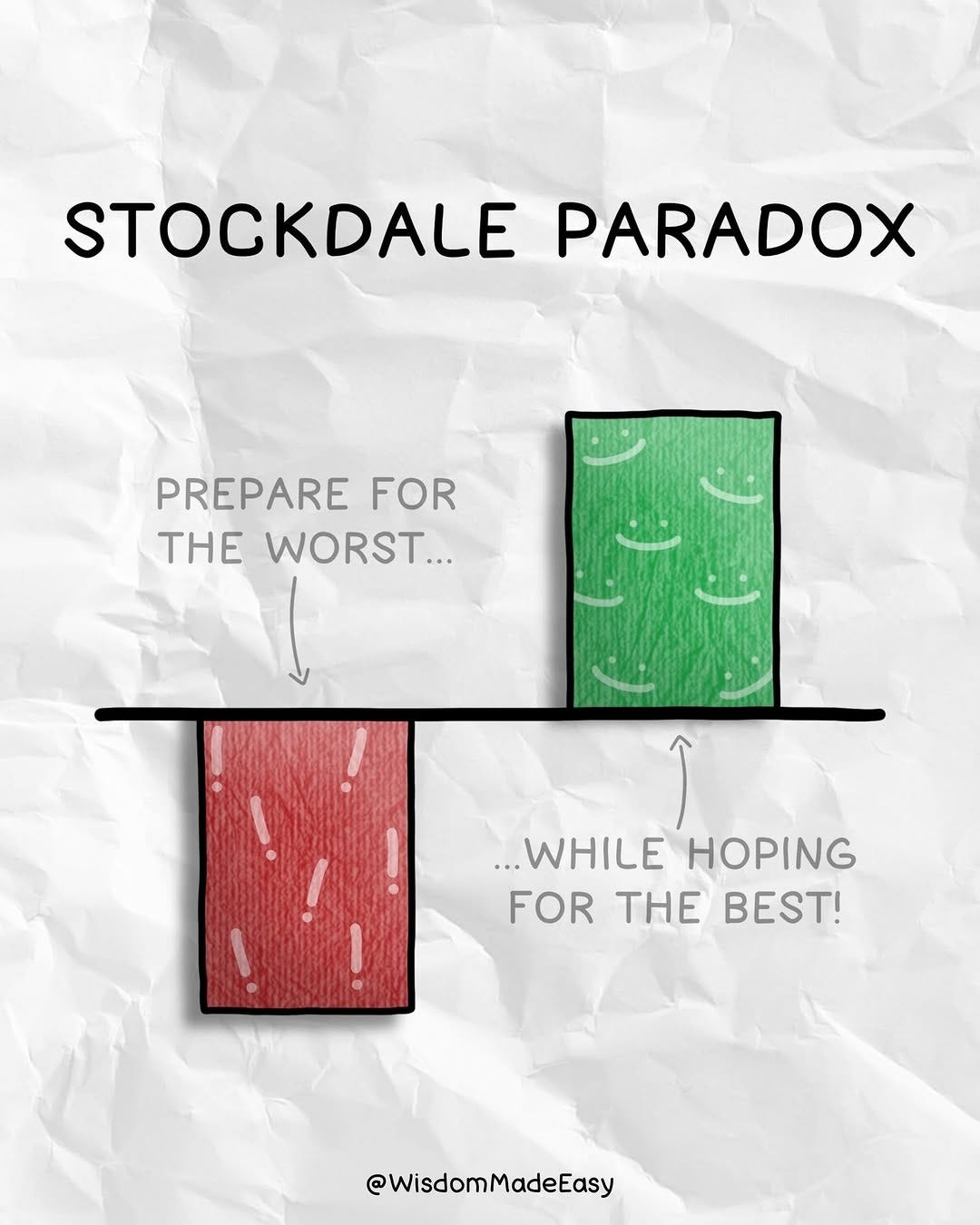Hope Isn’t a Strategy Unless You Pair It with This
Why the best leaders face brutal facts—and never lose faith in what’s possible
In the middle of unimaginable suffering, Admiral James Stockdale found clarity.
He was held captive in a Vietnamese prison camp for over seven years. Tortured. Isolated. Unsure if he’d ever make it home.
And yet, he survived—with a mindset that became his greatest weapon.
When asked how, he shared something powerful, it’s now known as the Stockdale Paradox:
“You must never confuse faith that you will prevail in the end… with the discipline to confront the most brutal facts of your current reality.”
That’s the paradox:
Face the worst. Never let go of hope.
Most of us struggle to hold both. We either:
Sugarcoat the problem and avoid the discomfort
Or become consumed by it, unable to see a way forward
But the best leaders—and the most grounded humans—do something else. They acknowledge what’s hard and still believe in what’s possible.
One leader I worked with inherited a team on the verge of burnout. Morale was low, deadlines were slipping, and trust was fragile.
She didn’t pretend things were fine. She got in the room, named the issues out loud, and made space for truth.
Then she did something equally important—she painted a path forward—not a hype story, but a clear, hopeful direction grounded in possibility.
Her team followed her, not because she had all the answers, but because she gave them reason to believe.
The truth is, resilience isn’t built by pretending.
And leadership isn’t earned through certainty.
It’s forged in the space between reality and hope.
So ask yourself:
– What truth am I avoiding right now?
– What future is still worth working toward?
Look reality in the eye. Keep your feet there.
But don’t stop scanning the horizon.
Reflection question:
Where can you practice the Stockdale Paradox this week, by confronting reality without giving up on possibility?


